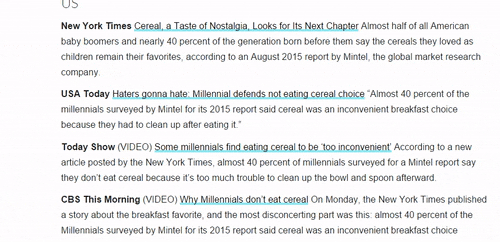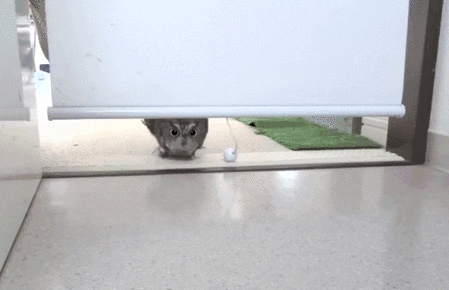Over-programming is something that we talk about a lot in student engagement circles.
We either feel like we see the same students showing up for events time and time again or that we’re planning more events but not seeing enough (or the “right”) students there.
We spend a lot of time playing the generational blame game and attributing low attendance to apathy.

But what do we really mean when we say over-programming?
Is it purely about the number of programs happening within our campus communities?
I like to view over-programming as uncoordinated and unintentional event planning. When this happens it feels like our communities are being inundated with hundreds of things to do, but what it fails to do is provide a seamless experience — one that is intentional, collaborative, and aims to provide an active and vibrant campus life.
This happens because we don’t take a critical look at the “what, when, where, why, who, and how” of programming. As campus activities staff, it is important for us to take a step back and take a bird’s eye view of the programming and event planning happening on our campuses, because if we don’t do it, I am not sure who else will!
Questions to ask yourself before planning an event
When:
We’ll start with the “when” because when your programs happen can impact quite a few of these other areas that we’ll talk about. When working with programming we not only have to think about the time of day that our events are happening, but also the time during the academic year, in relation to other major campus events, holidays, and current events.
Timing can really make or break an event. We’ve all felt the pain of a flopped event that was scheduled for just before exam week. And often, the “when” of an event will inform the “where.”
Where:
Where should the event be hosted? What spaces are available? Where are spaces on campus that are under- or over-utilized that we could explore? Is the space that we are planning to use appropriate for the audience we are expecting? The list of questions about where can go on and on, because where an event takes place can have a huge impact on accessibility, visibility, and ultimately, overall attendance.
Consider the atmosphere that you want your event to have. Do you want attendees to come and go as they please? Do you want it to be a ticketed event? Is it important that there not be a lot of background noise? If you use a student involvement tracking software, see if you are able to generate a report based on event location. You just might find that some space is really successful at encouraging student attendance, or that another space is almost never used!
What & How:
This is the area that we tend to spend the most time on. What is the event going to be and how is it going to be executed? Are you doing a paint party or block party? Bringing this speaker or that one? What are the logistics, and how are you going to pull it off?
There is a reason this part takes up the bulk of the planning time, but the trick is to get this down to a science and develop processes that allow you to move easily through from brainstorming to planning to implementation.
Who:
When planning an event it is critical to think about who the audience is and who the audience could be. We often think about faculty and staff, their families, and the local community, all of whom may have a different age range from our students. We must then ask ourselves if this event is intended only for students or are we open to extending our target audience?
Once we know our “who,” we must develop marketing strategies specific to that audience. How are we going to reach them and let them know that the event is happening? If we’re inviting folks who aren’t students, how will we reach out to them? Knowing the “who” – both the primary and the secondary audiences — allows you to make smart decisions about outreach.
For example, you might plan to bring a hypnotist to campus, and a psychology professor might decide to extend extra credit to students who attend the show. If you know that faculty members or other offices plan to offer incentives for attendance, you can make sure to verify that those students actually attended the event.
Why:
While this list ends with why, I, like Simon Sinek, recommend that when starting to plan a program you start with why.
You must be able to answer why you are doing the event. How does this event fit into the mission of the organization or department hosting the event? Is there a clear “why” behind what you are doing? If not, I suggest going back to the drawing board and identifying where the gap is and adjusting as necessary, because when our programming doesn’t have a purpose, we fall into the over-programming conundrum.
So how do we know if there are simply too many programs?
Is it by tracking attendance? Is it just based on the simple number of programs being offered (i.e. a certain number is appropriate for a certain school population range)? My answer is no to both of those.
A good program doesn’t mean there were over 100 students at it, just as a good programming year doesn’t mean there were over 100 programs hosted.
As event organizers, we have to think about the considerations above and ensure that we are thoughtfully trying to work through each of them as they relate to our student body.
If it is beginning to feel like your campus is experiencing over-programming, here are some strategies you can explore.
How to combat over-programming
Know what is going on
We are inundated with information from emails, texts, social media, flyers, and even calls that sometimes it is hard to keep track of everything happening.

How are you sharing your calendar? Is there a way for organizations and departments to keep calendars online in an easily-accessible place?
That’s a great first step to getting all of the departments in-line with each other. As you are planning events you can layer the calendars on top of each other to find the gaps and then utilize those dates for your event.
What opportunities are there for you to bring major event planners together to identify when major events will occur? This allows you to plan ahead, reserve space, and create a community of support. You can instruct everyone to bring only events that they would want other organizations to take part in.
And if you’re on a campus with strong athletics, simply being aware of the athletic calendar is crucial. You can tag onto athletic events or weekends. Make your event the build-up or afterparty of a major sporting event. This can not only create a “package” of an experience but also help build school spirit!
Assessment
What kind of data are you using to make your decisions? Utilizing involvement data is a great place to start.
While we all know that the number of people at an event is not necessarily a marker of success, it can be a great tool. Then if you have any additional information about the demographics of who is coming to events you can even further modify and adjust your events to reach different audiences.
Social media polls are also another great (and free) mini tool for you. You can engage with your followers (who are self-identified as at least moderately interested in what you have going on) to find out what they think you should offer or how you can improve an experience.
One other area we often don’t think to assess would be space. Are we thinking about what spaces we typically use vs. what else is out there for us to use? Does it feel like all the good spaces are gone? Remember that where an event happens is only one aspect of a program, but you still must be mindful of how you’re utilizing spaces.
Get creative and think about spaces on campus that could be new and fun for students to use, even if it’s an old space on-campus. Can you utilize a lobby, hallway, or other common space that doesn’t typically host an event? Work with your campus reservation office and determine what is truly available or usable!
Lastly, remember that your programs and events should center quality, not quantity.
We want to ensure that we are offering our communities a robust calendar of events with high-quality things to do — not full calendars with low-rate events.
Do you feel like your campus is over-programmed? How do you work to combat that feeling? Let us know on Twitter, @ByeByeRyan and @themoderncampus!





